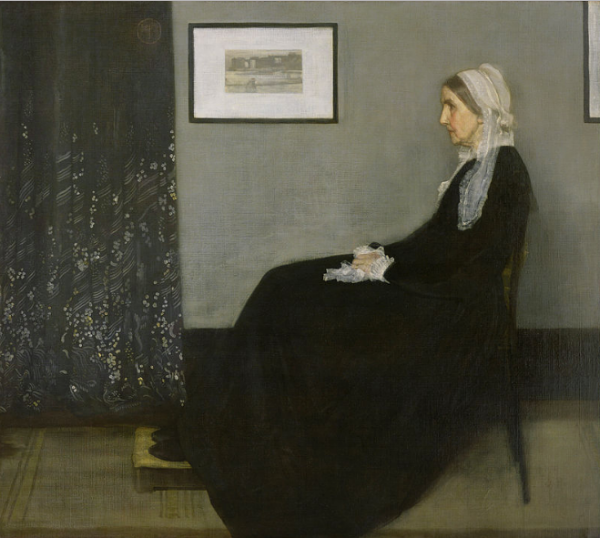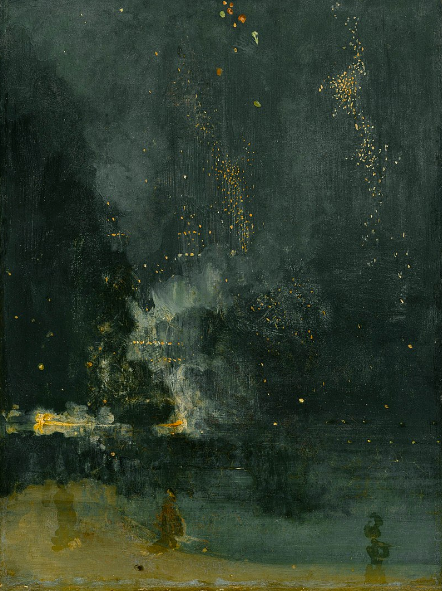Joanna Hiffernan, Whistler’s ‘Woman in White’: Writing Our Own Stories
James McNeill Whistler - Symphony in White, No. 1: The White Girl
‘My painting simply represents a girl dressed in white standing in front of a white curtain.’
James McNeill Whistler
A little while ago I attended a small exhibition focusing on James McNeill Whistler’s paintings, prints and sketches of one particular woman: Joanna Hiffernan. (‘Whistler’s Woman in White’ was at the Royal Academy, London.)
Most famously Hiffernan featured in Whistler’s 1862 painting ‘The Woman in White.’ But as his friend, model, lover and executive assistant over two decades, she appeared in many of his other works.
Whistler’s paintings of Hiffernan are radiant and beautiful. Combining realism with aestheticism, they introduced a new chapter in modern painting. And they prompt reflections on our ability to tell our own stories.
Hiffernan was born in Limerick, Ireland in 1839, one of five daughters to a teacher. Along with thousands of other poor Irish immigrants at the time, the family moved to London when she was about 5.
Born in Lowell, Massachusetts in 1834, the son of a railway engineer, Whistler left America aged 21 to study art in Paris, before settling in London in 1859. The following year he met Hiffernan, who was earning money as an artist’s model.
‘She has the most beautiful hair that you have ever seen! a red not golden but copper – as Venetian as a dream!’
James McNeill Whistler in a letter to Henri Fantin-Latour
The couple moved into lodgings in Rotherhithe and were soon at the heart of London’s creative scene, attending parties, gallery openings and seances together.
Whistler meanwhile worked on his definitive painting of Hiffernan and submitted it, under its original title ‘The White Girl,’ to the Royal Academy annual exhibition in 1862.
‘The White Girl has made a great sensation – for and against.’
Joanna Hiffernan
Wearing a white muslin dress, Hiffernan stands against a white damask curtain and on top of a bearskin rug. She has long, loose, copper-coloured hair, big green eyes and full lips. Composed and thoughtful, she holds her arms by her sides and a white lily in one hand.
The picture is enigmatic. Viewers are left to interpret her dreamy expression, her casual posture, the lightly held lily and the vanquished bear.
‘Some stupid painters don’t understand it at all, while Millais for instance thinks it splendid, more like Titian and those old swells than anything he has seen – but Jim says that, for all that, the old duffers may refuse it altogether.’
Joanna Hiffernan
James Abbott McNeill Whistler, Symphony in White, No. 2: The Little White Girl, 1864.
Hiffernan was right. ‘The White Girl’ was rejected, first by the Royal Academy, and then by the Paris Salon. These institutions were perhaps confused by its understated colours, muted mood and lack of narrative.
‘The picture should have its own merit, and not depend on dramatic, or legendary, or local interest… As music is the poetry of sound, so is painting the poetry of sight.’
James McNeill Whistler
Now living with Hiffernan in Chelsea, Whistler painted her in white again – first standing by the fireplace, holding a Japanese fan, glancing at her reflection in the mirror; and then accompanied by another woman, reclining on a sofa and staring straight out at us.
When these three ‘Symphonies in White’ were eventually exhibited, they benefitted from an association with the recent Wilkie Collins bestseller ‘The Woman in White’ (which Whistler claimed never to have read). They created a popular sensation, marking a turning point in the artist’s career.
Whistler went on to paint and sketch Hiffernan repeatedly. Here she is in a bustling dockside bar in Wapping; staring wistfully out at the countryside from a doorway; dressed in a fashionable silk kimono and holding a Chinese vase. Here we see her relaxing in the studio; having her hair brushed; sitting back wearily in an armchair, her long copper locks spread out around her.
In 1865 Hiffernan and Whistler joined Gustave Courbet for a working holiday on the Normandy coast. Both artists produced a series of atmospheric seascapes, and Courbet painted Hiffernan. In later life the Frenchman wrote nostalgically to Whistler about their time together.
‘Do you remember Trouville and Jo who played the clown to amuse us? In the evening she sang Irish songs so well because she had the spirit and distinction of art.’
Gustave Courbet
Wapping, 1860–64. National Gallery of Art, Washington, John Hay Whitney Collection
In 1866 Whistler’s mother (who looks so formidable in his famous portrait), disapproving of his relationship with Hiffernan, urged him ‘to promote a return to virtue in her.’ He subsequently gave his partner power of attorney to manage his affairs while he travelled, and wrote a will leaving her his whole estate.
In time Whistler moved on to another mistress. But he and Hiffernan remained on good terms, and she cared for his son by another woman. In the end she died before him, in 1886, at the age of 47. She had been suffering from bronchitis.
The recent exhibition collected some 70 works. I was struck by the fact that it comprised nearly all of the known images of Hiffernan.
Weary 1863
It’s strange to think that, with the exception of a few letters, the records of Hiffernan were refracted through the eyes of others. We understand that she was beautiful, intelligent and had a vibrant personality. But we cannot really grasp what she felt about herself and her world.
Of course, nowadays it’s hard to imagine that all the pictures of oneself could be assembled physically in one place. There are so many of them. And through social media platforms we can create our own images and write our own narratives. We have agency. We can take back control.
But that is less the case with work. It being a team exercise, we often suppress the self in seeking collective objectives. There is an ever-present pressure to conform and fit in.
Nonetheless I feel it’s important to maintain something of one’s own identity in a professional context. We should be able to define the terms by which we engage with our employers – setting the boundaries of who we are and why we’re here - and, optimally, those terms should align with the company’s values and vision. At BBH, while applying myself to its commercial goals and creative ambitions, I insisted on pursuing my own projects, writing in my own style, presenting in my own way. I’m confident it benefitted the business. And it certainly helped me.
We should strive to write our own stories, even when we’re at work.
'I am not in love
But I'm open to persuasion.
East or West,
Where's the best
For romancing?
With a friend
I can smile.
But with a lover
I could hold my head back,
I could really laugh,
Really laugh.
Now if I can feel the sun
In my eyes
And the rain on my face,
Why can't I
Feel love?’
Joan Armatrading,’Love and Affection'
No. 374








